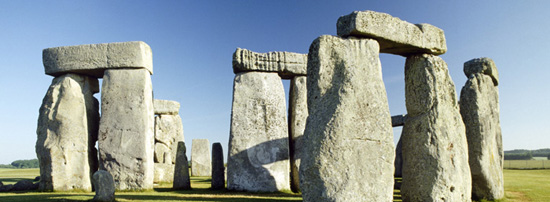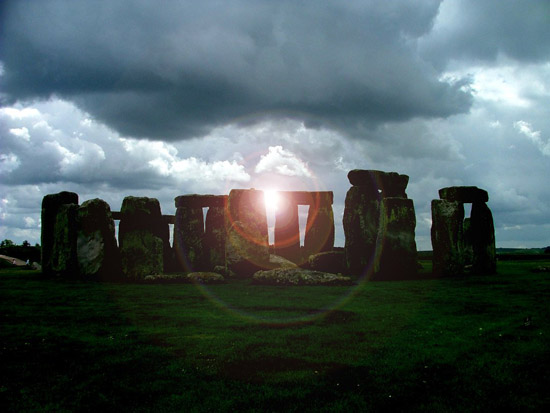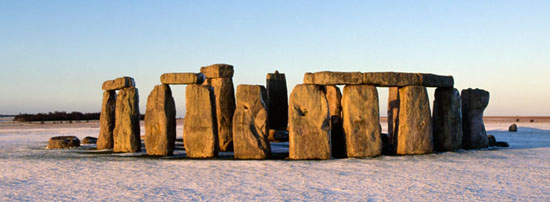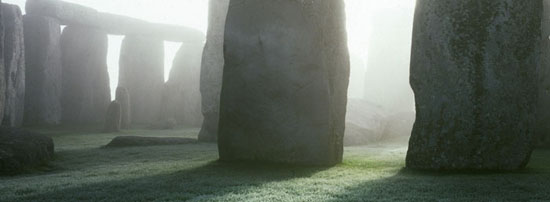Stonehenge is a prehistoric and a mystical monument which is located in the English county of Wiltshire. It is situated almost 3.2 km west of Amesbury. Documented as one of the most famous places in the world to visit, Stonehenge was built in three phases that consisting of over 30 million hours of labor.
Stonehenge is one of the most famous sites in the world composed of stones (not a single structure but consists of a series of earth, timber, and stone structures) in a circular fashion that are standing upright, were revised and re-modeled over a period of more than 2000 years. Stonehenge is at the centre of the most dense complex of Neolithic and Bronze Age monuments in England, including several hundred burial mounds.

The construction of this prehistoric monument started some 5000 years ago and it is amazing to know that these stones are still in place after 5 millenniums. The site and its surroundings were added to the UNESCO’s list of World Heritage Sites in 1986. Stonehenge voted ‘Britain’s Best Historic Site’ and ‘UK’s top wonder in a list of the country’s omissible attractions.

 There are no written records as to why Stonehenge was built. Their purposes are still under study and speculation. There are many theories but no confirmations. Theories about who built it have included the Druids, Greeks, Phoenicians, and Atlantics. Speculation on the reason it was built range from human sacrifice to astronomy. Stonehenge has served as a burial ground right from the beginning. It has been notified that the people who have been buried in the ground date back to the 3000 BC .Investigations over the last 100 years have revealed that Stonehenge was built in several stages from 2800 – 1800 BC.
There are no written records as to why Stonehenge was built. Their purposes are still under study and speculation. There are many theories but no confirmations. Theories about who built it have included the Druids, Greeks, Phoenicians, and Atlantics. Speculation on the reason it was built range from human sacrifice to astronomy. Stonehenge has served as a burial ground right from the beginning. It has been notified that the people who have been buried in the ground date back to the 3000 BC .Investigations over the last 100 years have revealed that Stonehenge was built in several stages from 2800 – 1800 BC.
Stonehenge comprised a circular bank-and-ditch of about 330 feet (100 metres) in diameter.
Stonehenge is a series of concentric rings of standing stone around an altar stone at the center.
The first ring In the central portion (the core) has a horseshoe plan of originally five trilithons, each of two upright stones supporting a single colossal lintel, with its axis directed to the midsummer sunrise.
Beyond these was first a circle of smaller uprights, sacred “blue” stones, transported from South Wales, as the second layer.
and then an outermost layer, enclosing circle of sandstone monoliths 13.5 feet high (4 metres), which support what was once a continuous lintel.

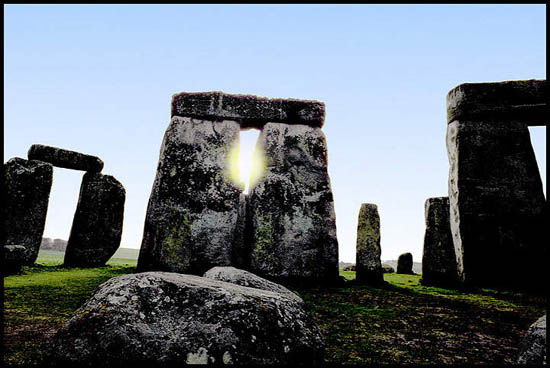 Beyond this a circle of small, movable “marker stones” were set in pits and farther out, The outer circle was made from a landscaped trench separated the site from the surrounding land which is now mostly destroyed, it was about 380 feet in diameter, 8 feet wide, and 2 or 3 feet high.
Beyond this a circle of small, movable “marker stones” were set in pits and farther out, The outer circle was made from a landscaped trench separated the site from the surrounding land which is now mostly destroyed, it was about 380 feet in diameter, 8 feet wide, and 2 or 3 feet high.
A long avenue marked by uprights sets up an axis, identified by the Heel Stone, a large stone with a pointed top.


























